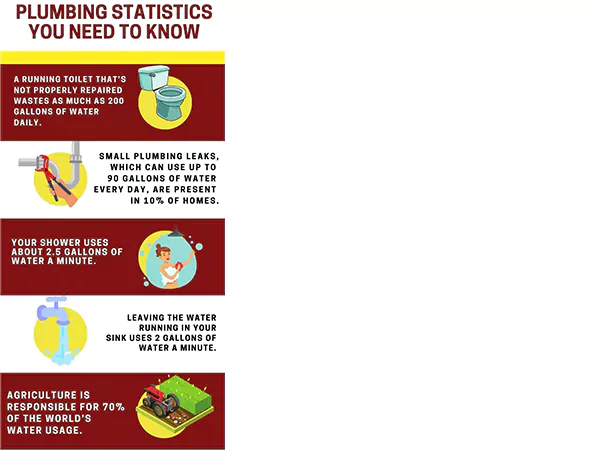What is the Rule of Thumb for Pipes?
DIY is becoming very common these days. After the pandemic, the inflation is at an all-time high. But our problems are still the same. Some things just cannot stay in working order forever. This is especially true in the case of plumbing.
It’s sometimes hard to understand what is actually wrong in the case of plumbing, one day it is working as a smooth-oiled machine and the next day you get a random clog or leak from god knows where. Oftentimes, if the issue is simple enough you’d want to fix the problem yourself.
But many of us forget the one small thing, most common folks are not very familiar with the kind of pipes that are installed within their houses.
This is where the rule of thumb for pipes comes into play. It outlines the basic guidelines that assist plumbers across the world in making the correct decisions when it comes to choosing the right kind of pipe for the job.
In this article, we will teach you about the different types of pipes used in plumbing and also the rules that govern their usage. Besides that, you must know about buying a 24 inch sink pipes installed in your kitchen.
Still, it’s not always good to tackle such issues without professional help. If you’re stuck on something you do not understand, it is best to look for professional help. You can simply pick up your phone and search for something like the best plumbing services in Highland Park, IL.
So, without any further delays, let’s look into the world of plumbing and DIY.
DID YOU KNOW?
In 1829, the Tremont Hotel in Boston was the first hotel in the United States to have indoor plumbing. Although archeologists have found evidence that the Egyptians had indoor plumbing that dates back to 2500 B.C.
Different Pipes and Their Rules
- PVC Pipes: This is the most common type of pipe that is usually found in residential buildings and waste lines. It is lightweight and resistant to chemicals. However, it is sensitive to temperature. So keep it away from places with high heat.
- CPVC Pipes: Now, these are the pipes that can take some heat and are usually used in residences to supply both hot and cold water in most suburban homes.
- PEX Pipes: Remember, these are the flexible pipes that are mostly used in many interior water lines. They can take temperature fluctuations and are usually found behind most drywalls and below wooden floors.
- Copper/ Cast Iron/ Steel /Brass Pipes: These are the most traditional options for pipes. You may find it in homes that were built on or before the 90s. If you are living in an old home then these are the pipes to get.
It is important that you remember to get the correct kind of pipe for your project and needs. While this list may help you get the correct kind of pipe, there is a lot more to plumbing than sticking two of the same kinds of pipes together.
You need to keep in mind the environmental conditions of your fix, is it permanent or are you just fixing it so it can tide you through your next payday? All these aspects must be taken in mind before you make a choice.
Other General Rules: The Size, Climate, and Place
The Size
Generally speaking, the pipe sizes are usually designated in the NPS or Nominal Pipe Sizes.
As a rule of thumb, pipes with larger diameters like three-quarter inches or one-inch pipes are mainly used for main supply or drainage. While the smaller ones are used for internal pipes and fixtures.
Also Read: Home Renovation Content Creators to Follow
The Climate
Local climate can extend beyond the scope of hot or cold. In warmer regions, PVC pipes can melt away or distort easily while in humid areas like places near large water bodies can easily corrode your metal pipes and fixtures.
The Place
Now that you know that finding the right kind of pipe for your home is easy, there is just one other factor you need to know as a rule of thumb. It’s the place where you’re doing the repair. You need to know the laws and regulations for doing repairs in your state.

Subtitle: Some plumbing statistics you need to know
Following the Safety Standards
If you have had everything in order then it is time that you start considering the safety mechanisms. While it may seem like a simple repair, it can still be a dangerous job.
Pipes are often tucked away in cramped places like behind the walls, in the corner of the basement, under the floors, and many others which may give any claustrophobic person a run for their money.
It’s not just the places where these pipes are that dangerous, it can be the pipes themselves too. These pipes could be rusted or broken, adjacent to a hot boiling water line or an exposed electric line. They may even just be in places that may make you feel contaminated just seeing the environment.
If you are unsure that you can do the repair yourself safely, then it’s time to get some professional help.
Compatibility and Proper Sealing
If everything goes as planned and you have bought the right pipes, made sure of your environment and building codes, and have clear and easy access to the pipes.
There can still be one thing that can hinder you from completing any repair and that is the compatibility between the old and new.
You need to make sure that both your new and old pipes can fit and seal perfectly so that there are not any leaks after your repairs.
Make sure that your repairs last or if they are temporary, at least until you can get a professional to look at them.
Conclusion
While these rules and guidelines may help you through some form of DIY repairs, they can never be on par with the work and guidance of a professional plumber.
Their specialized knowledge gives them the ability to breeze through local regulations and their quality of work will always be top-notch.
We hope that this article gave you some insights into the wonderful world of plumbing and may help you in your DIY endeavors.
Exploring Common 2-Story Houses Energy Usage Patterns and…
How Long Does It Take to Obtain An…
The Secrets Behind High-Performance Racing Windows
Co-Parenting Strategies for Divorced or Separated Parents in…
How Auto Lawyers Help Victims of Distracted Driving…
How Can an Attorney Help in a Trucker…
Best DVD Rippers for Windows & Mac: Free…
Reducing the Impact of Unexpected Construction Expenses
8 Ways to Improve Wi-Fi Speed and Stability…
What Information Can Be Gleaned From a Funnel…
Essential Strategies to Make Hotel Management Easier
Puppy Power: Raising a Happy and Healthy Pup…












